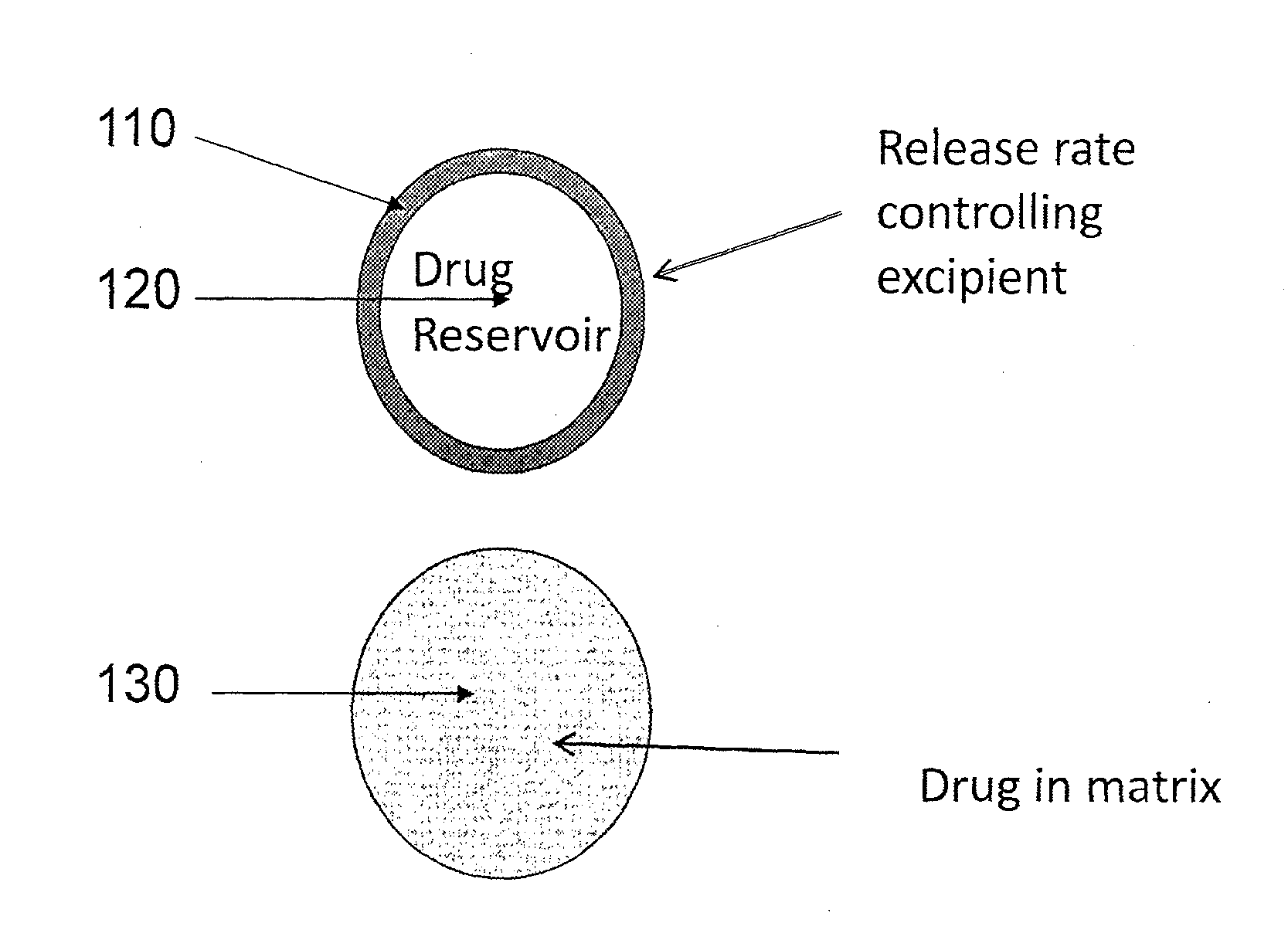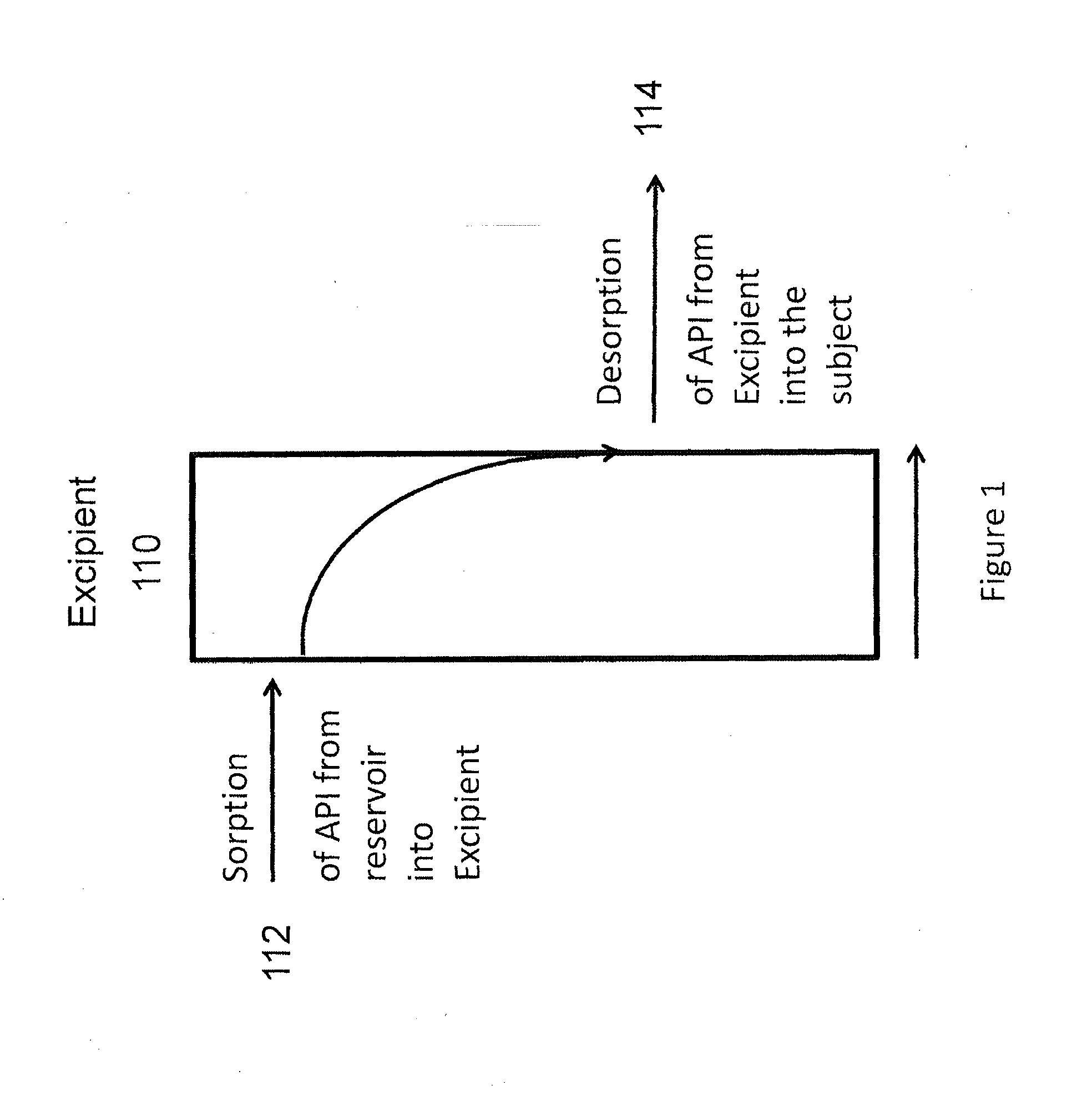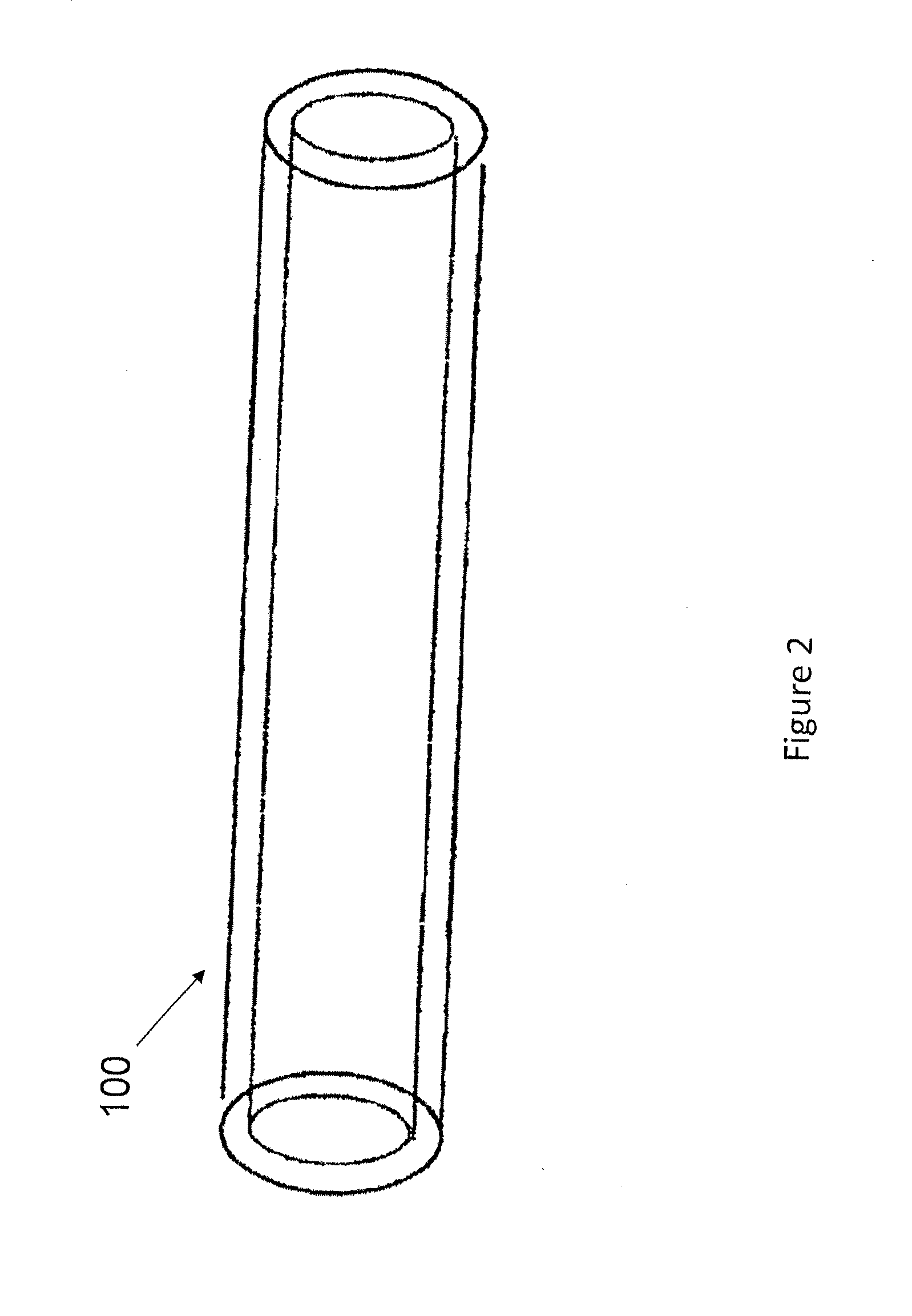Implantable drug delivery compositions and methods of treatment thereof
a technology of drug delivery composition and composition, which is applied in the direction of drug composition, prosthesis, biocide, etc., can solve the problems of increasing bone resorption, increasing the number of pills, and increasing the difficulty of patients taking drugs
- Summary
- Abstract
- Description
- Claims
- Application Information
AI Technical Summary
Benefits of technology
Problems solved by technology
Method used
Image
Examples
example 1
Manufacture of API Containing Implants
[0304]The follow general procedure was followed for the manufacture of API-containing implants. Tubing was received in continuous length rolls and was cut to an appropriate starting length using a single-edged razor blade (or suitably sized scalpel). One end of each tubing section was thermally sealed imparting a semi-spherical closure on the tip of the tubing section.
[0305]For API blends that included a sorption enhancer and lubricant, the API and sorption enhancer, croscarmellose sodium, were premixed in a Turbula blender. The lubricant, stearic acid, was added and the mixture was again mixed in a Turbula blender.
[0306]The API blend was compacted using a single punch tablet press. Drug pellets were manually placed inside each sealed section of tubing. The open section of each pellet-containing tubing section was then sealed into a semi-spherical seal. Sterilization was accomplished by gamma irradiation of the implants.
example 2
Raloxifene Release from Polyurethane Implants
[0307]The drug implants were manufactured as described in Example 1 using TECOFLEX® EG-80A as the tubing material and either raloxifene hydrochloride or raloxifene free base as the API. The drug blend was 88% API, 10% sorption enhancer, and 2% lubricant. The implant dimensions were a total length of the implant of about 40 mm, an OD of 4.0 mm, an ID of 3.6 mm and a wall thickness of 0.2 mm. A total of about 250 mg raloxifene were loaded into the implant with 10% croscarmellose sodium and 2% stearic acid. The implants were sterilized by gamma irradiation and placed in an elution batch consisting of 800 mL 0.9% saline at 37° C. Weekly exchanges of the elution media were analyzed by HPLC for up to 20 weeks. The graph is shown in FIG. 4. No drug was released from the raloxifene hydrochloride implant, whereas the raloxifene free base was readily released from the implant.
example 3
Raloxifene Release from PEBAX® Implants
[0308]The drug implants were manufactured as described in Example 1 using PEBAX® 3533 or PEBAX® 2533 as the tubing material and raloxifene free base as the API. The drug blend was 88% API, 10% sorption enhancer, and 2% lubricant. The implant dimensions were a total length of the implant of about 40 mm, an OD of 4.0 mm, an ID of 3.6 mm and a wall thickness of 0.2 mm. A total of about 250 mg raloxifene were loaded into the implants with 10% croscarmellose sodium and 2% stearic acid. The implants were sterilized by gamma irradiation and placed in an elution batch consisting of 800 mL 0.9% saline at 37 ° C. Weekly exchanges of the elution media were analyzed by HPLC for over 100 days. The graph is shown in FIG. 5.
PUM
| Property | Measurement | Unit |
|---|---|---|
| Time | aaaaa | aaaaa |
| Mass | aaaaa | aaaaa |
| Mass | aaaaa | aaaaa |
Abstract
Description
Claims
Application Information
 Login to View More
Login to View More - R&D
- Intellectual Property
- Life Sciences
- Materials
- Tech Scout
- Unparalleled Data Quality
- Higher Quality Content
- 60% Fewer Hallucinations
Browse by: Latest US Patents, China's latest patents, Technical Efficacy Thesaurus, Application Domain, Technology Topic, Popular Technical Reports.
© 2025 PatSnap. All rights reserved.Legal|Privacy policy|Modern Slavery Act Transparency Statement|Sitemap|About US| Contact US: help@patsnap.com



